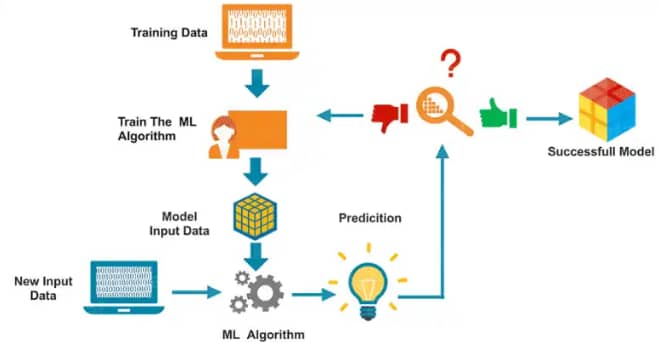What is machine learning?
Machine learning is a method of data analysis that automates analytical model building. It is a branch of artificial intelligence that uses algorithms to learn from data and make predictions or decisions without being explicitly programmed to do so.
There are three main types of machine learning: supervised learning, unsupervised learning, and reinforcement learning.
Supervised learning is where an algorithm is trained on labeled data, meaning the desired output (or “label”) is provided for each input. The algorithm then makes predictions about the output for new data. Examples include linear regression and logistic regression.
Unsupervised learning is where the algorithm is not provided with labeled data and must find patterns or relationships on its own. Examples include clustering and dimensionality reduction.
Reinforcement learning is a type of machine learning in which an agent learns to make decisions by interacting with its environment and receiving feedback in the form of rewards or penalties.
Machine learning is widely used in a variety of applications such as image recognition, natural language processing, self-driving cars, fraud detection and many more.
How machine learning works?
Machine learning algorithms work by using a set of input data, called the “training data,” to learn and make predictions or decisions.
Here is a general overview of the process:
Collect and prepare the data: The first step is to gather and prepare the data that the algorithm will use to learn. This includes cleaning and pre-processing the data, and splitting it into a training set and a test set.

Choose a model and train it: Next, a machine learning model is selected and trained on the training data. The model “learns” the patterns and relationships in the data and creates a prediction function. This process is known as “fitting” or “training” the model.
Evaluate the model: After the model is trained, it is evaluated on the test data to see how well it performs on unseen data. This allows us to gauge the model’s accuracy and make any necessary adjustments.
Make predictions or decisions: Once the model is trained and evaluated, it can be used to make predictions or decisions on new data.
It’s important to note that the process of training a machine learning model requires fine-tuning the parameters of the model and selecting the appropriate model for the task at hand. Also, the accuracy of the model depends on the quality and quantity of the data, the complexity of the model, and the choice of the algorithm.
List of all packages / programs on machine learning using python.
There are many programs and libraries available for machine learning in Python. Here are a few popular ones:
TensorFlow – an open-source library for machine learning and deep learning, developed by Google.
scikit-learn – a library for traditional machine learning, which includes a wide range of supervised and unsupervised learning algorithms.
Keras – a high-level neural networks library, which runs on top of TensorFlow or other backends.
PyTorch – an open-source machine learning library developed by Facebook AI Research.
Theano – a library for fast numerical computation, particularly well-suited for machine learning.
SciPy – a library for scientific and technical computing in Python, which includes modules for optimization, interpolation, and other machine learning-related tasks.
Pandas – a library for data manipulation and analysis, which is often used in preprocessing data for machine learning.
NLTK – a library for natural language processing, which includes tools for text mining and machine learning.
Gensim – a library for topic modeling and document similarity analysis.
LightGBM – a high-performance gradient boosting framework that is used for machine learning tasks.
These are just a few examples of the many libraries and frameworks available for machine learning in Python, and new ones are being developed all the time.



